HEWAM – Heat Exchanger With Additive Manufacturing
HEWAM project aims to develop a heat exchanger using all the potential of additive manufacturing. We propose a geometry that fits with a wide range of surfaces and volume used in aerospace industry. Double shape curve allows fitting with the curvature of aircraft engine as shown on the following pictures.
Moreover, thermal, fluid and mechanical constraints have been considered in the design in order to adapt the local geometry to the physical phenomenon.
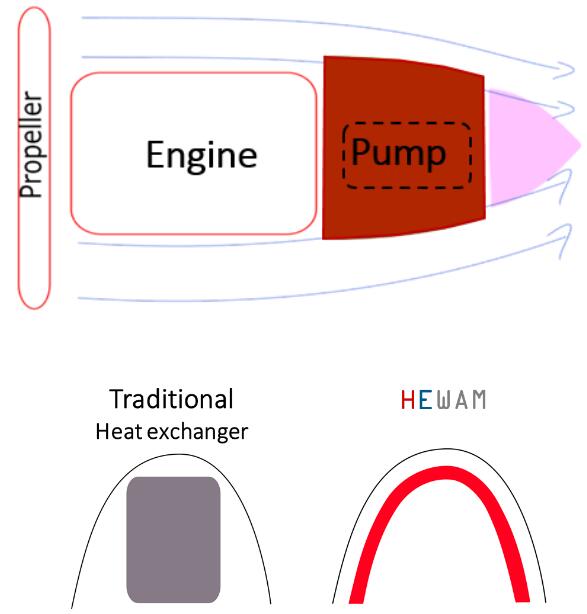
The project is developed by the consortium Temisth & AddUp – Sogeclair (becoming Printsky*)
PrintSky* is a joint venture between AddUp, AM machine manufacturer and Sogeclair Aerospace, mechanical engineering design office. The JV is dedicated to the incubation of future industrial production projects in metallic additive manufacturing domain for the Aeronautics, Space and Defense industries.
Temisth is a company specialized in the development of customized thermal solution using additive manufacturing. By its expertise and skill on thermal issues, Temisth support companies from several domains to develop an innovative project from the idea up to the proof of concept.
Aerospace industries have a wide range of thermal applications as well as air conditioning, brake cooling system, embedded cold plates for electronics, engine thermal management etc. In the future, with the increase of electrical systems on aircraft, thermal systems for electric engine or heat recovery on the APU will need more and more customized solutions in order to insure performances with light weight devices

Inputs for this project have been chosen without any specific requirements but are inspired from several applications cited above.
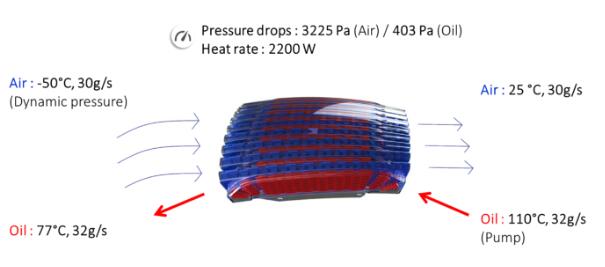
The objectives are to cool a liquid as oil entering the heat exchanger at 110°C with ambient air at -50°C. The mass flow rate of oil is fixed. Air mass flow rate is given by the dynamic pressure of the air flow arriving in the area of the HX and the pressure drop characteristics of the device. The objective is to remove 2200W of the oil circulation (32g/s ~2,4 L/min) on one modulus of the HX by ensuring enough air flow through the HX.
The material chosen for the design is Inconel 718. This material is heavier than aluminum by more than 3 times and is less conductive, however for additive manufacturing it presents more interesting characteristics. With Inconel, we can ensure thin wall (<0.5mm) without leakage and thin fins (0.15mm). Designing the heat exchanger with the good architectures allows obtaining similar mass and performances than aluminium AM cases.
AddUp, Sogeclair and Temisth have developed a specific methodology in order to ensure the thermal requirements with mechanical constraints and additive manufacturing feasibility.

The main physical issue on this heat exchanger is to ensure enough airflow inside the heat exchanger with high heat transfer coefficient. The methodology developed by the consortium leads to a specific design taking into account the variation of air temperature (from -50°C up to +25°C) and thus its density. We have thus increase channel width for limiting air acceleration and thus pressure drop. In order to maintain thermal performances, fins have an adaptative geometry along the air flow in order to consider air velocity and channel size changes.
CAD conception is respecting some AM rules and allows to perform mechanical simulation to check pressure proof/burst etc.
Iteration from CAD, CFD (Computational fluid dynamic) on an elementary channel and mechanical simulation have been carried out before arriving to the final concept:
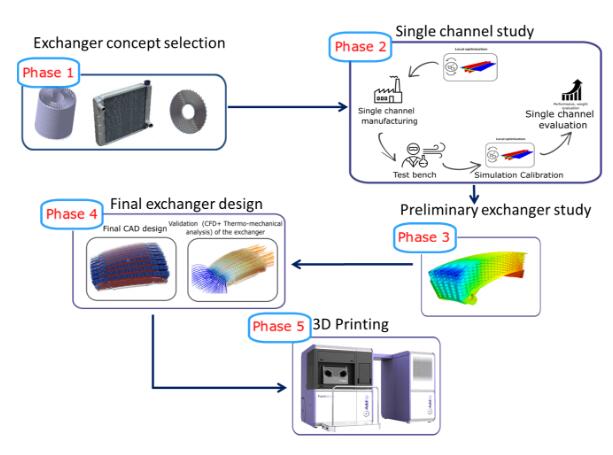 AddUp Manager software ensures the feasibility of the manufacturing:
AddUp Manager software ensures the feasibility of the manufacturing:
- Part orientation choice
- Support setting
- Laser strategy
- Process simulation
- Manufacturing launch

Finally, three heat exchangers have been printed on a FormUp 350 :
- Production volume : 350x350x350 mm
- Laser power : 2x500W
- Programmable layer thickness : 20 to 100 µm
- Scanning speed :10 m/s maximum
- Heating plate : 200°C
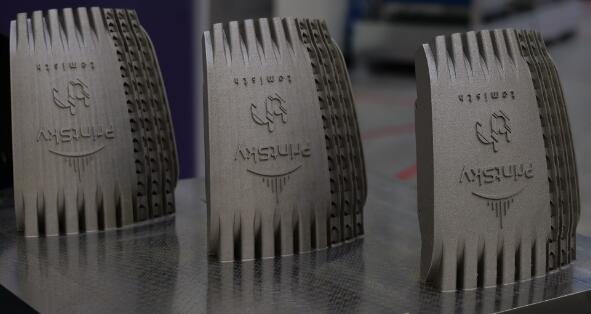
The three samples will be exhibit at Paris Airshow 2019 (Salon du Bourget) on respective booth of each member of the consortium (AddUp, Sogeclair and Temisth)
Conclusions
The consortium has developped a heat exchanger with the objectives of answering a generic aerospace requirements and taking all the advantages of the additive process.
The optimization has been made at several scale : Local optimization of channels with thin fins. Meso-scale optimization with a variation of fins pattern and channel size. Macro-scale optimization using the curved shape for a better system integration. Globally, the thickness available on this sample allows obtain an apparent porosity of about 90%.
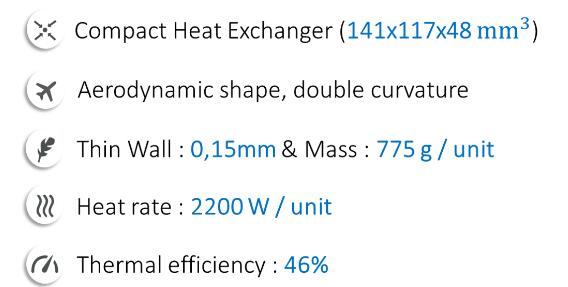
For more information about this heat exchanger, please, come and visit us on our respective booth at Paris Airshow :
- AddUp on Fives booth: Hall 2B C186 and Michelin booth :Hall 2A C253
- Sogeclair : Hall 2B B80
- Temisth on Region Sud booth: Hall 4 B68
* : creation subject to the authorization of the competent Competitions authorities: decision awaited mid-july 2019
Source:Linkedin

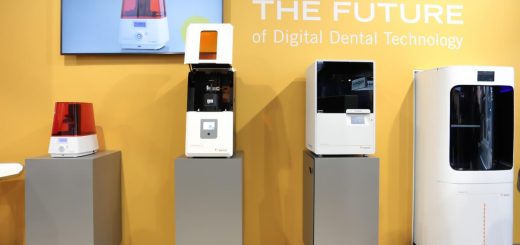

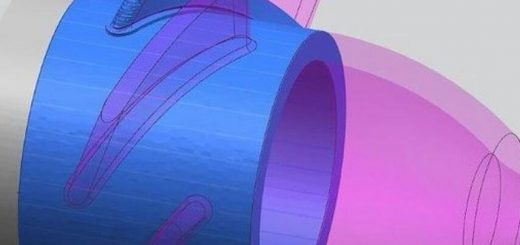
Recent Comments